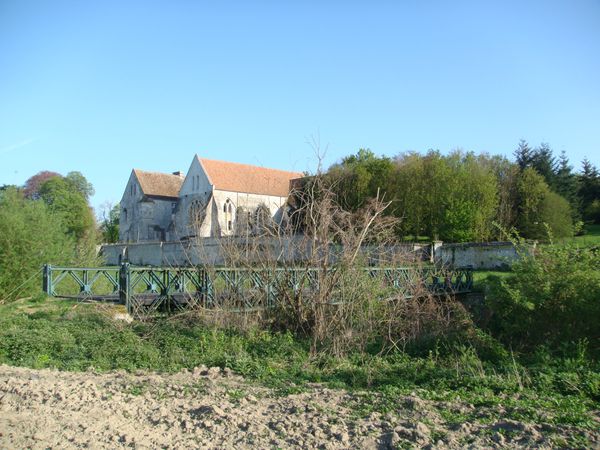Bonport abbey

It’s a private estate.
4 € (= £ 2.65) : admission fee for adults. 2 € (= £ 1.32) : admission fee for children. No reduced rates for the unemployed or students (even on Heritage days).
The access to the abbey is from the road from Pont-de-l’Arche. The car-park is at the entrance, just before the main gate, about 500 metres (= 550 yards) from the buildings. So access to disabled and old people is not very convenient (as well as in the abbey because of the stairs). The only part of the abbey these people will be able to visit are the park, the chapter-house, the old Hall, the Scriptorium, a few minor rooms, and they’ll have a look inside the Refectory.
Listed as a place of historic interest in 1942, that old Cistercian abbey was built for Richard the Lionheart from 1190 to 1225.
Le Batelier d’Aviron, a chronicler in the Renaissance, tells a story to explain its name; Bonport: Richard the Lionheart nearly drowned in the Seine, which flows past the abbey, as he was hunting. In the middle of the stream, he promised to have a monastery built for Virgin Mary if she saved him by making him reach the bank. The people who have shown interest in the abbey usually retain that “good port” story.
Beyond the words and the chivalrous jokes, we think that the “goog port” is that of the Christian God’s son among the people. That’s what one of the coats of arms in the abbey seems to suggest since it represents a Nativity.
The specific features of Cistercian, therefore Gothic architecture: the intersecting ribs, the sculpted capitals,… date back to the time of the building.
The remaining buildings which make Bonport particularly interesting are: the refectory (with a service hatch and worn tiles dating back to medieval time), the kitchen (with a huge central fireplace).
In order to compensate time’s damages, the occupants them reshaped quite a lot of rooms. That’s why going from one room into another, into that of a 17th and 18th century castle. The old hall of the abbey became a sitting-room, warmed up by beautiful paneling, contrasting sharply with the neat Cistercian curves in the adjoining Scriptorium. The sacristy of the former church was converted into a kitchen… and a library found its place in a sumptuous study with a wooden floor inlaid in the French way. There are no books left. The monks’ dormitory, on the first floor, has become a huge corridor with, above, a paneled barrel-vault (but it is hidden behind a dull wooden plastered ceiling).
As for the cloister, at Notre-Dame church, the lodgings, the lay-brothers’ buildings, the churchyard, they were used as a stone quarry when the abbey was bought by local middle-class people after 1790. So some stones from the abbey can still be seen in Criquebeuf, Sotteville-sous-le-Val, Pont-de-l’Arche, Alizay,… for they show the waterplant decoration which is the mark of Cistercian sculpture.
In the park, the bases of a few pillars and walls of the old church give us an idea of its dimensions and architectural features (for example, its chapels, radiating from the ambulatory).

